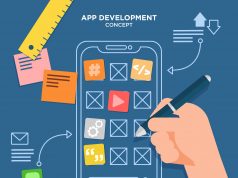The world of User Experience (UX) design is in a constant state of evolution, and the United States has played a significant role in shaping this transformation. This journey from the early days of Skeuomorphism to the recent emergence of Neumorphism has been marked by a series of design philosophies and trends that have not only influenced the digital landscape but also the way we interact with technology. In this blog, we will explore the fascinating evolution of UX design in the USA, delving into each era and its impact on the digital experience.
Evolution of Design: From Skeuomorphism to Neumorphism
The journey from Skeuomorphism to Neumorphism in UI/UX design represents a dynamic evolution in design principles. Skeuomorphism, a bygone era, strived for hyper-realism by emulating physical objects within digital interfaces. It resulted in visually intricate yet familiar designs. In contrast, Neumorphism gracefully merges realism and minimalism, employing soft shadows and highlights to subtly mimic tactile experiences. This approach retains a sense of elegance and sophistication while prioritizing usability and accessibility. This shift showcases the adaptability of design, as it embraces a cleaner and more modern aesthetic while preserving a touch of realism, shaping the future of user experiences.
The Skeuomorphic Era: Realism in Digital Design
The Skeuomorphic era, which spanned the early years of digital design, was characterized by a concerted effort to replicate real-world elements within digital interfaces. Designers aimed to create a sense of familiarity for users by mirroring physical objects and materials in their digital counterparts. Apple, under the guidance of Steve Jobs, was a prominent advocate of this approach.
Realistic Elements:
During this period, digital interfaces were replete with realistic textures, gradients, and three-dimensional effects. Icons, buttons, and app designs often mimicked tangible objects. For example, the Notes app resembled a yellow legal pad, and the Calendar app featured a leather-bound aesthetic.Familiarity and Accessibility:
The primary objective of Skeuomorphism was to reduce the learning curve for users. By making digital elements closely resemble their physical counterparts, users found it easier to understand and interact with digital technology. Skeuomorphic designs appealed to a wide audience, including those less accustomed to technology.Critiques and Transition:
While Skeuomorphism achieved its goal of familiarity, it also resulted in interfaces that were visually cluttered and sometimes overly ornate. As technology advanced and the need for responsive design became apparent, designers began to transition away from Skeuomorphism toward more minimalist and efficient design philosophies.
Transition to Flat Design: Minimalism Takes Center Stage
The transition from the Skeuomorphic era to the adoption of Flat Design marked a significant shift in UX design philosophy.
Embracing Minimalism:
Flat Design, in contrast to Skeuomorphism, championed minimalism. It stripped away the excesses of realism, focusing on simplicity, clarity, and functionality. This shift was not only driven by aesthetics but also by practical considerations, such as faster loading times and improved usability.Key Characteristics:
Flat Design is characterized by the absence of embellishments like gradients, shadows, and three-dimensional effects. Instead, it relies on bold colors, clean lines, and simplified iconography. The emphasis shifted from creating lifelike representations to delivering intuitive, user-friendly interfaces.Influence on Mobile Design:
Flat Design gained prominence with the rise of mobile devices. Its clean and uncluttered aesthetic was well-suited for the limited screen space of smartphones and tablets. Iconic interfaces like Windows 8 and the iOS 7 redesign epitomized the Flat Design philosophy.
Rise of Neumorphism: A Return to Realism with a Twist
In recent years, a new design trend called Neumorphism has emerged, representing a unique blend of Skeuomorphism and Flat Design.
Soft Realism:
Neumorphism introduces soft, realistic elements into interfaces, creating a sense of depth and tactility. Elements appear to be slightly raised from the background, akin to soft buttons on a control panel. This subtle, real-world touch sets Neumorphism apart from its predecessors.Modern Aesthetic:
While Neumorphism embraces realism, it does so with a modern twist. It avoids the visual clutter of Skeuomorphism, favoring simplicity and elegance. Soft shadows and highlights create a gentle, approachable aesthetic that appeals to users in search of both familiarity and contemporary design.Usability and Accessibility:
Neumorphism’s soft shadows and highlights enhance the contrast between elements, aiding usability and accessibility. It strikes a balance between aesthetics and functionality, catering to a broad user base.Challenges:
Despite its advantages, Neumorphism poses challenges related to usability and accessibility. Achieving the right level of contrast without compromising the soft, real-world feel can be a delicate balancing act.
In the ongoing journey of UX design in the USA, each era, from Skeuomorphism to Flat Design and Neumorphism, has left its mark on digital experiences. Designers continue to explore innovative approaches to create user-friendly, visually appealing interfaces that adapt to evolving technology and user expectations.
Neumorphism in Modern UX: Characteristics and Benefits
Neumorphism, as a contemporary design philosophy, brings forth several key characteristics and benefits that have earned it recognition in modern UX design:
Tactile Realism:
Neumorphism capitalizes on the concept of tactile realism. By incorporating soft shadows and highlights, Neumorphic interfaces create an illusion of physicality. This tactile quality makes users feel like they are interacting with real objects on the screen, enhancing user engagement and immersion. The sense of tangibility can be particularly appealing in applications related to product visualization, interior design, or e-commerce, where users desire a close-to-real-life experience.Simplicity:
While Neumorphism introduces elements of realism, it carefully maintains the simplicity that is characteristic of Flat Design. This balance ensures that interfaces remain clean, uncluttered, and easy to navigate. Users can enjoy the benefits of realism without sacrificing usability. Simplicity remains a core tenet, providing straightforward interactions and straightforward visual cues.Aesthetics:
Neumorphism is not merely about functionality but also aesthetics. It brings a touch of elegance and sophistication to digital interfaces. The subtle interplay of light and shadow adds depth and dimension, making interfaces visually appealing. This aesthetic appeal can be particularly advantageous in applications that aim to convey luxury, exclusivity, or a premium experience.

Challenges and Critiques of Neumorphism
While Neumorphism offers numerous advantages, it is essential to acknowledge and address the challenges and critiques associated with this design philosophy:
Usability:
The subtle, realistic elements in Neumorphic design, while visually engaging, can sometimes blur the line between interactive and static elements. This ambiguity can pose usability challenges, as users may find it difficult to discern which elements are clickable or actionable. To mitigate this concern, designers must employ clear visual cues to guide user interactions effectively.Accessibility:
Achieving the right balance of contrast and shadows in Neumorphism can be a complex task. If not executed correctly, it may hinder accessibility, particularly for users with specific visual impairments. Designers must prioritize accessibility considerations and conduct thorough testing to ensure that Neumorphic interfaces remain inclusive and usable by all.Overuse:
As with any design trend, there is a risk of overuse. The distinctive Neumorphic style can lose its impact and appeal if implemented ubiquitously. Designers must exercise restraint and reserve Neumorphism for projects where it aligns with the brand identity and user expectations. Overuse can lead to visual fatigue and a lack of distinctiveness, undermining the philosophy’s effectiveness.
In navigating the landscape of Neumorphism, designers must strike a delicate balance between its captivating realism and the practical aspects of usability and accessibility. By doing so, they can leverage its characteristics and benefits while addressing its associated challenges and critiques, ultimately delivering engaging and inclusive digital experiences.
The Future of UX Design in the USA
The world of UX design is dynamic and ever-evolving, and the future promises to be no different. As technology continues to advance, UX designers in the USA and beyond will face new challenges and opportunities. The integration of augmented reality (AR), virtual reality (VR), and artificial intelligence (AI) will undoubtedly reshape the landscape of digital experiences.
The future of UX design in the USA lies in creating seamless, intuitive, and personalized experiences that adapt to users’ needs and preferences. It involves harnessing the power of data and analytics to make informed design decisions and prioritizing accessibility and inclusivity.
Conclusion: The Ongoing Journey of UX Design in the USA
The evolution of UX design in the USA, from Skeuomorphism to Flat Design and the rise of Neumorphism, reflects the dynamic nature of the field. Each era brought its own set of challenges and innovations, shaping the way we interact with digital interfaces. As we look to the future, the principles of usability, accessibility, and user-centered design will continue to guide UX designers in creating exceptional digital experiences that resonate with users across diverse backgrounds and preferences. The journey of UX design in the USA is far from over, and it promises to be an exciting one, driven by innovation and a commitment to enhancing the user experience.
Read more:


















